Nanban byōbu (Southern Barbarian Screens)
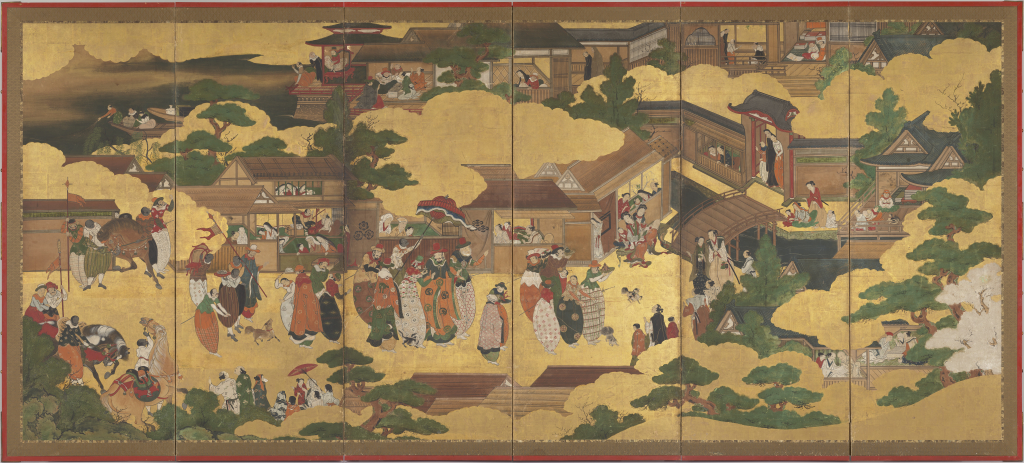
Kano School, Nanban byōbu (Southern Barbarian Screens), 1630/1650, pair of six-panel screens; ink, color, and gold on paper, Gift of Margery Hoffman Smith, public domain, 64.13A,B
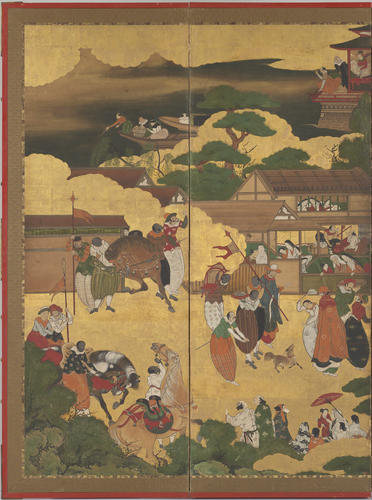
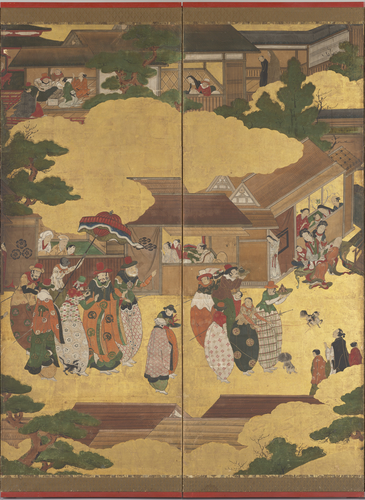
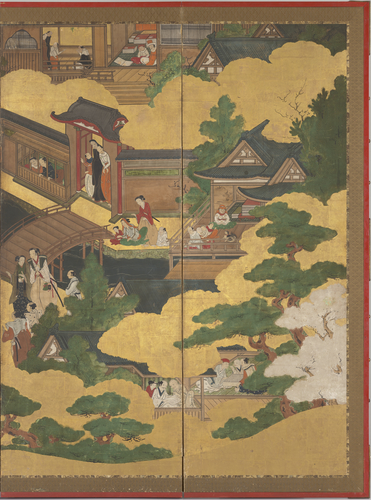
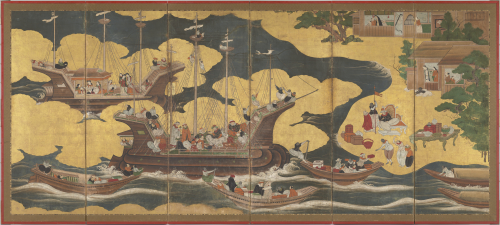
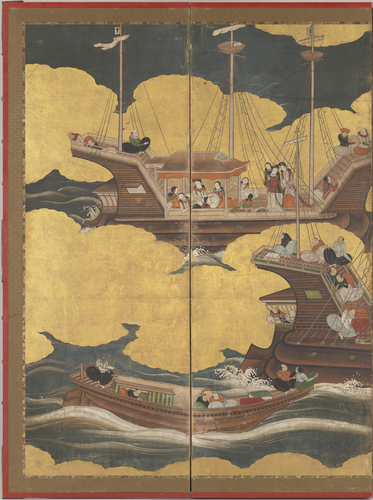
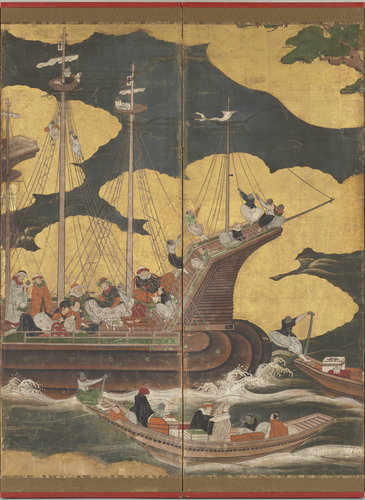
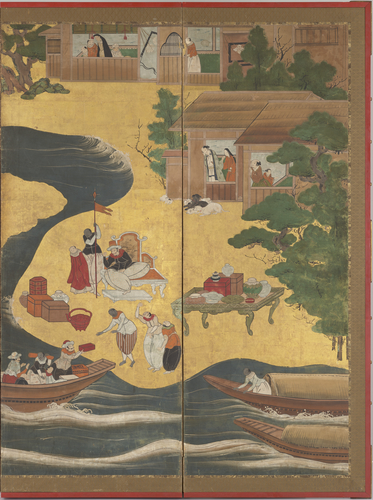
This work is not currently on view.
- Title
Nanban byōbu (Southern Barbarian Screens)
- Related Titles
original language: 南蛮屏風
translated: Southern Barbarian Screens
transliterated: Nanban byōbu
- Artist
- Date
1630/1650
- Period
Japan: Edo period (1615-1868)
- Medium
pair of six-panel screens; ink, color, and gold on paper
- Dimensions (H x W x D)
67 in x 146 in
- Collection Area
Asian Art
- Category
Paintings
- Object Type
folding screen
- Culture
Japanese
- Credit Line
Gift of Margery Hoffman Smith
- Accession Number
64.13A,B
- Copyright
public domain
- Terms
From Objects of Contact: Encounters between Japan and the West
This pair of folding screens is a typical example of Nanban byōbu, literally, "Southern Barbarian screens," depicting the arrival of Europeans in Japan. In the late sixteenth and early seventeenth centuries, Portuguese merchants and Jesuit missionaries were called "southern barbarians" because they sailed to Japan from colonial outposts in Java. On the right screen, men dressed in patterned jackets, hats, and voluminous pants tapering at the ankle are escorted through town, watched avidly by curious residents. On the left screen, two ships sit in the harbor as goods are rowed ashore. One of the ships carries female passengers, but since the artist would never have seen a European woman, he portrays them in what would have been the most familiar "foreign" guise, with Chinese-style clothing and hairstyles.
Description
In 1542, Japan had its first contact with Europe when three Portuguese on a Chinese junk were shipwrecked in Japan. Seven years later, the Jesuit Francis Xavier arrived in Kyūshū, Japan’s westernmost island, and began to win converts to Catholicism among the samurai elite. Portuguese merchants followed in his wake and, despite some competition dominated European-Japanese trade for nearly a century.
Because the Portuguese came to Japan from their colonial outposts in Java, the Japanese called them the “Southern Barbarians.” The Japanese were fascinated by these monstrously tall foreigners with enormous noses and bizarre costumes. From the late 16th to the mid-17th century, large-scale screen paintings such as this pair depicting the Portuguese arriving in port were much in vogue. The typical composition portrays the Japanese shore on the right and the ocean on the left, as here.
At right, Japanese men and women look on as the ship captain and his entourage make their way into town, while on the left, two high-decked ships ply the waves. One fanciful note is that the more distant ship carries female passengers. In fact, foreign women were forbidden to disembark in Japan—a policy designed to discourage foreigners from settling in for the long term. This artist imagines a bevy of European women, but since neither he nor any other Japanese had ever seen one, he depicts them with Chinese-style costumes and coiffures.
- Exhibitions
2020 Objects of Contact: Encounters between Japan and the West Portland Art Museum









